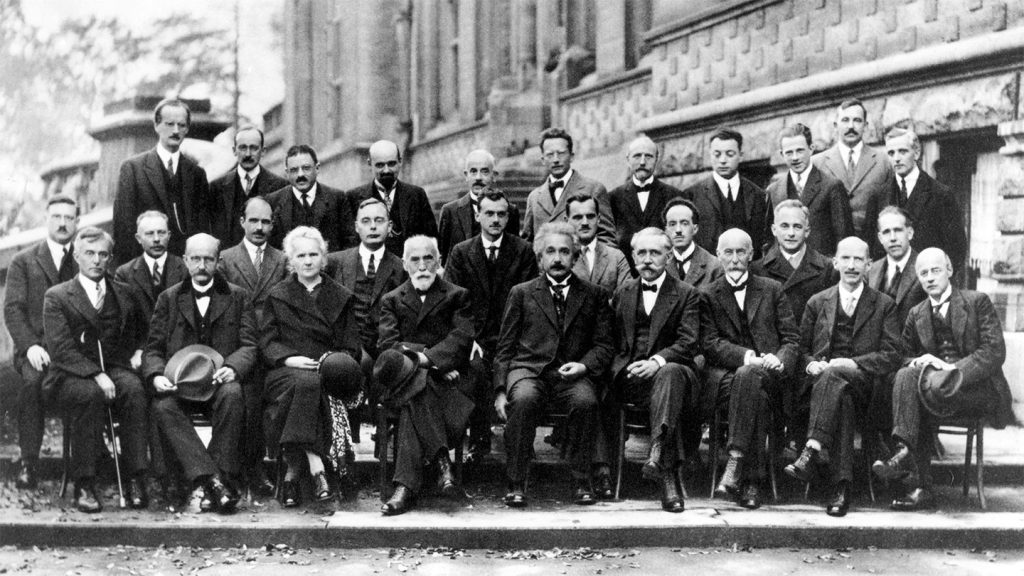The year 2025 marks a centennial celebration of a scientific revolution: the birth of quantum mechanics. This counterintuitive theory, governing the bizarre world of the very small, began to coalesce in 1925 with a flurry of groundbreaking papers. These foundational works, penned by luminaries like Werner Heisenberg and Erwin Schrödinger, transformed a collection of puzzling experimental observations into a cohesive framework. Quantum mechanics has since become the bedrock of modern physics, explaining phenomena from the structure of atoms to the behavior of stars, and underpinning technologies ranging from lasers to the ubiquitous smartphone. The United Nations has designated 2025 as the International Year of Quantum Science and Technology, a global commemoration of this scientific milestone.
The nascent stages of quantum mechanics emerged around the turn of the 20th century, as physicists grappled with experimental results that defied classical explanations. The year 1925 proved pivotal, with Heisenberg’s paper, swiftly followed by contributions from Schrödinger and others, solidifying the theoretical foundation. The equations developed during that era remain central to quantum mechanics today, a testament to their enduring power. This revolution in physics unveiled a profoundly different perspective on the natural world. It introduced the concept of quantization, where energy is absorbed and emitted in discrete packets, and the perplexing phenomenon of entanglement, where seemingly separate entities are linked in an invisible, correlated dance. Heisenberg’s uncertainty principle, formulated in 1927, further challenged conventional understanding, stating the impossibility of precisely knowing both the position and momentum of a particle. These counterintuitive concepts, including the famous thought experiment of Schrödinger’s cat – existing in a superposition of both dead and alive states – have not only transformed science but also captured the public imagination.
The impact of quantum physics on modern science is undeniable. Its principles are fundamental to a vast array of disciplines, from condensed matter physics to cosmology. As scientists explore increasingly smaller scales and shorter timescales, quantum phenomena become ever more prominent. Quantum mechanics is not merely an esoteric theory; it is the foundation for countless technological advancements that shape our daily lives. Semiconductor technology, the backbone of modern electronics, relies heavily on quantum principles. Medical imaging techniques like MRI leverage the quantum properties of atomic nuclei. Lasers, ubiquitous in communications, medicine, and industry, are a direct product of quantum theory. Even the smartphone in your pocket wouldn’t exist without the quantum understanding of atoms, elements, and their interactions.
The International Year of Quantum Science and Technology aims to celebrate this scientific heritage and highlight its profound influence on society. With over 60 nations participating, this global initiative seeks to raise public awareness of the wonders of quantum science and its pervasive impact on everyday life. By bringing together scientists, educators, policymakers, and the public, the celebration fosters collaboration and cross-cultural exchange, promoting a deeper appreciation for the transformative power of quantum mechanics. The goal extends beyond merely acknowledging past achievements. It serves as a platform to inspire future generations of scientists and engineers, encouraging them to explore the remaining mysteries and unlock the full potential of quantum technologies.
The mystique surrounding quantum physics, often perceived as a complex and esoteric field, is part of its allure. The counterintuitive nature of quantum phenomena, defying our everyday experiences, sparks curiosity and captivates the imagination. This intrigue has even permeated popular culture, with the term “quantum” becoming synonymous with cutting-edge science and often used – sometimes loosely – in science fiction. The enduring fascination with quantum mechanics stems from its ability to challenge our understanding of reality, pushing the boundaries of human knowledge. While the theory has been remarkably successful in explaining a vast range of phenomena, it still harbors unresolved mysteries.
Despite a century of progress, fundamental questions about quantum mechanics still linger. What is the underlying physical mechanism behind entanglement, the spooky action at a distance? What is the root cause of the indeterminacy enshrined in Heisenberg’s uncertainty principle? These are not mere philosophical musings; they are profound scientific challenges that drive ongoing research. The search for answers continues, fueled by the conviction that these are not insurmountable obstacles but rather puzzles waiting to be solved. The ongoing quest to unravel these mysteries promises to further deepen our understanding of the universe and unlock even more revolutionary technologies. The centennial celebration of quantum mechanics is not just a retrospective; it is a launchpad for future exploration, a testament to the enduring power of human curiosity and the relentless pursuit of scientific understanding.















